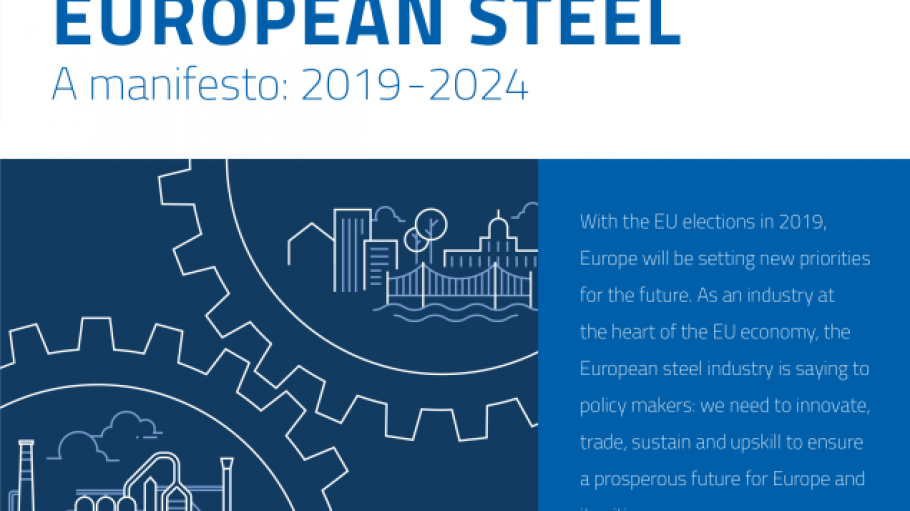

With the EU elections having taken place in May 2019, Europe is setting new priories and direction for the future. As an industry at the heart of the EU economy, the European steel industry is saying to policy makers: we need to innovate, trade, sustain and upskill to ensure a prosperous future for Europe and its citizens.
In the light of slowing demand, both generally and specifically for steel, persistently high global overcapacity of 550 million tonnes – 25% of global production capacity – high and volatile raw material and carbon prices, and surging imports, the European steel industry is facing potential crisis.
This manifesto sets out the footprint and importance of European steel to the EU economy, and explains why we need to make the industry more innovative, skilled and sustainable while also ensuring there is a robust trade policy that defends the sector against the challenges posed by overcapacity and trade surges.

Download this publication or visit associated links
Brussels, 27 November 2024 – The European steel industry is at a critical juncture, facing irreversible decline unless the EU and Member States take immediate action to secure its future and green transition. Despite repeated warnings from the sector, the EU leadership and governments have yet to implement decisive measures to preserve manufacturing and allow green investments across Europe. Recent massive production cuts and closure announcements by European steelmakers show that time has run out. A robust European Steel Action Plan under an EU Clean Industrial Deal cannot wait or manufacturing value chains across Europe will simply vanish, warns the European Steel Association.
Brussels, 12 November 2024 - Ahead of Commissioner-Designate Séjourné’s hearing in the European Parliament, European steel social partners, supported by cross-party MEPs, jointly call for an EU Steel Action Plan to restore steel’s competitiveness, and save its green transition as well as steelworkers’ jobs across Europe.
Brussels, 29 October 2024 – The European steel market faces an increasingly challenging outlook, driven by a combination of low steel demand, a downturn in steel-using sectors, and persistently high import shares. These factors, combined with a weak overall economic forecast, rising geopolitical tensions, and higher energy costs for the EU compared to other major economic regions, are further deepening the downward trend observed in recent quarters. According to EUROFER’s latest Economic and Steel Market Outlook, apparent steel consumption will not recover in 2024 as previously projected (+1.4%) but is instead expected to experience another recession (-1.8%), although milder than in 2023 (-6%). Similarly, the outlook for steel-using sectors’ output has worsened for 2024 (-2.7%, down from -1.6%). Recovery projections for 2025 are also more modest for both apparent consumption (+3.8%) and steel-using sectors’ output (+1.6%). Steel imports share rose to 28% in the second quarter of 2024.